Let us go to Kew / North Sheen, 11km from touch-down and look forward to 2020:
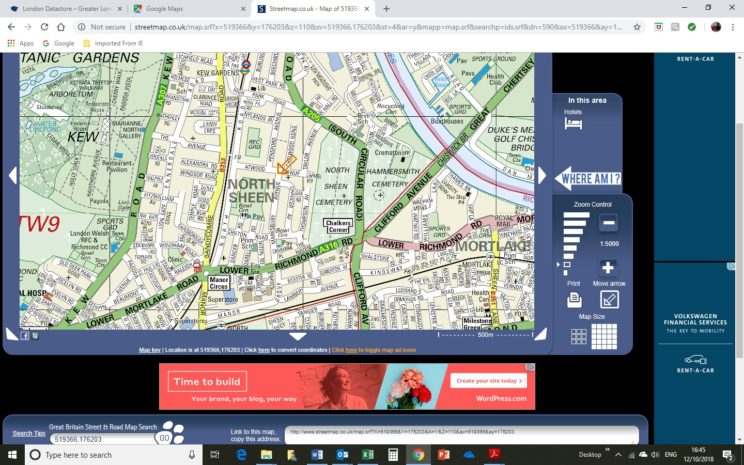
Put the co-ordinates into the tool and:
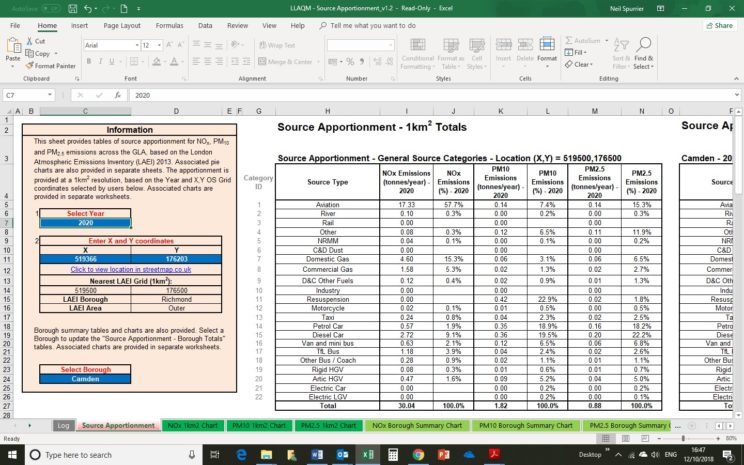
We are shown that 57.7% of NOx comes from aviation. There is a pie chart too:
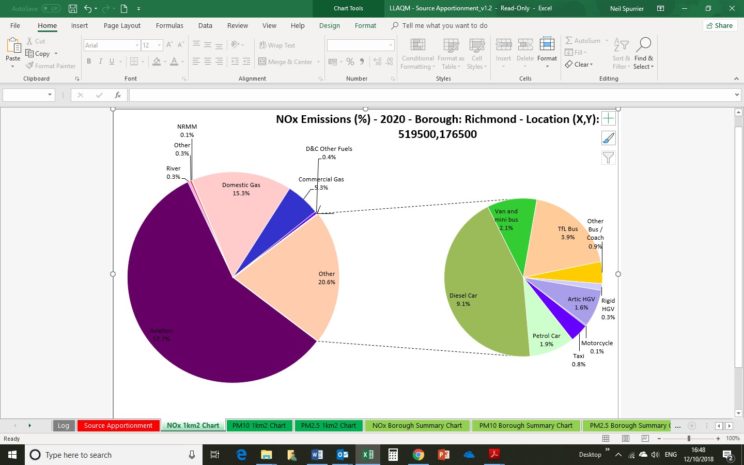
The legal limit is an annual mean of 40 micrograms per cubic metre. There is a NOx map:
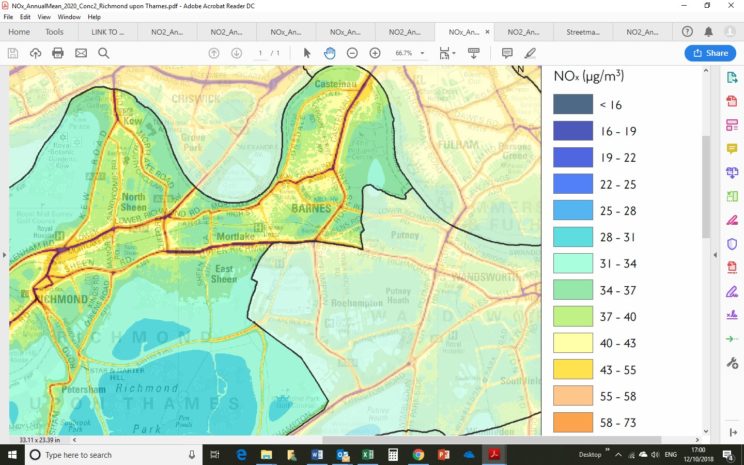
and a map of NO2 only
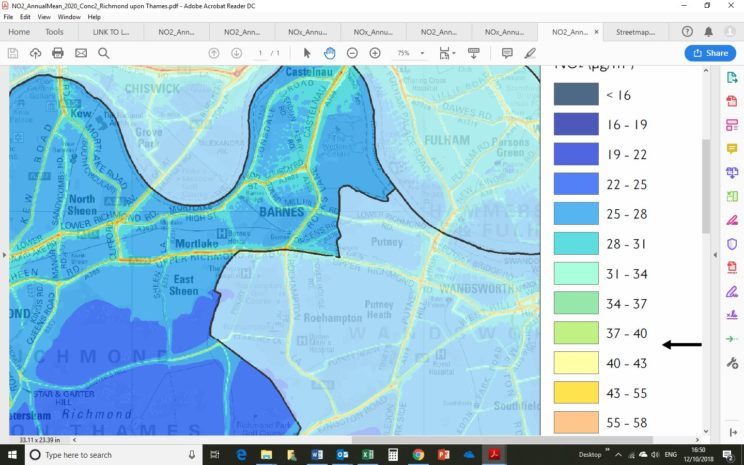
which show that in 2020 there will be areas particularly close to the roads that will breach the legal limits. That is with two runways at Heathrow and 57% of the NOx coming from aviation.
Let us go further away to Putney, which is under the flight path but is over 15 kilometres from touch-down at Heathrow:
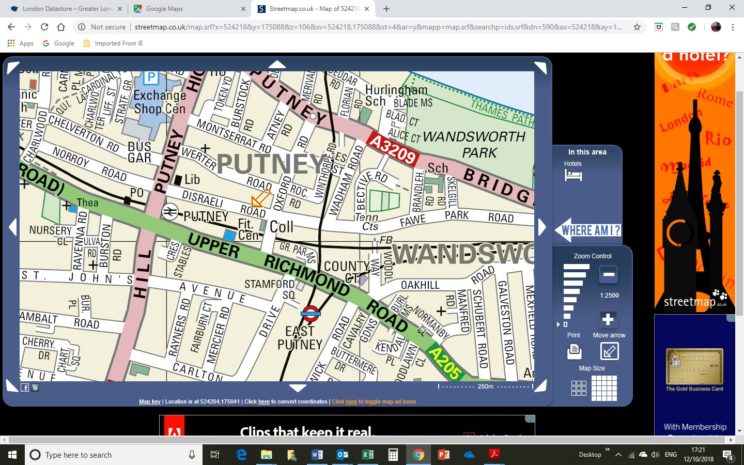
Put in the co-ordinates to the calculation tool and:
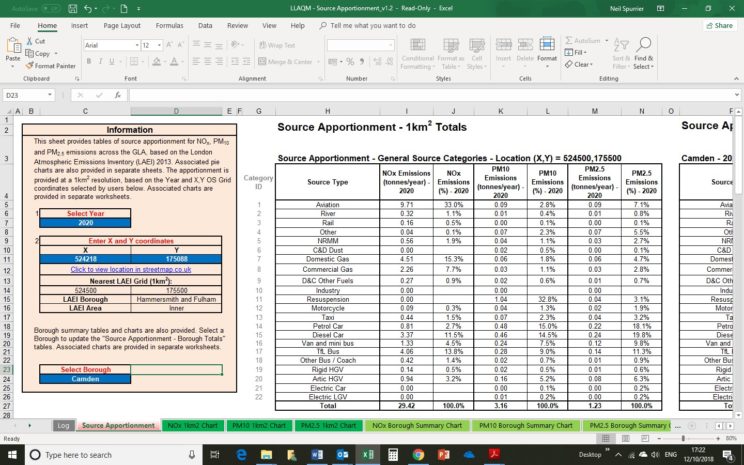
We find that aviation is still contributing to 33% of the NOx emissions. Putney is worse off than Kew though because total emissions are greater and therefore the breaches are more severe. The total emissions, of which aviation contributes 33%, is bigger. The NO2 map is:
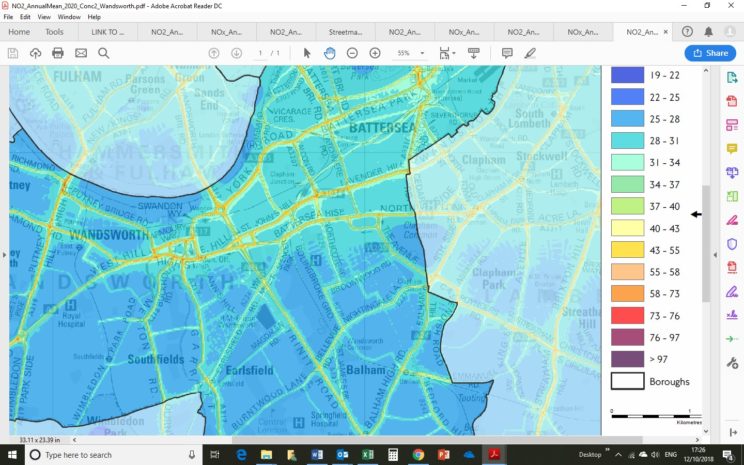
and the NOx map is:
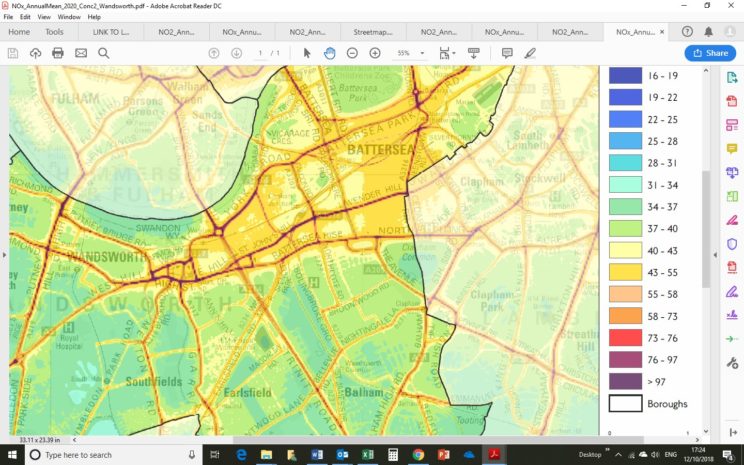
Heathrow itself is way over the permitted limits and is predicted to be so in 2020 and 2030.
The 2020 map:
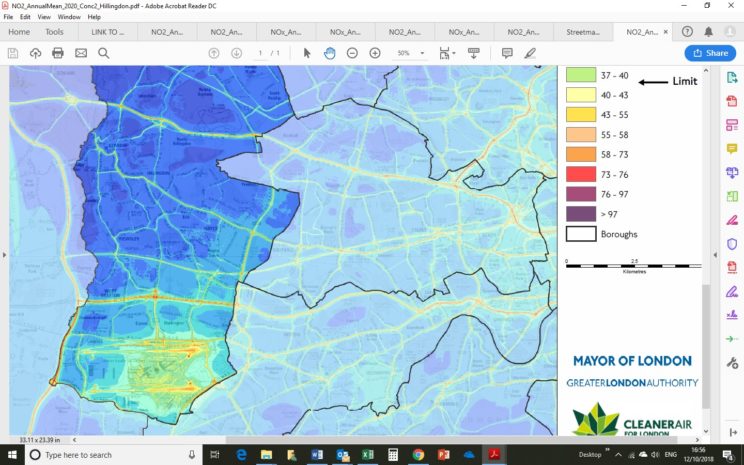
and the 2030 map is only a little better:
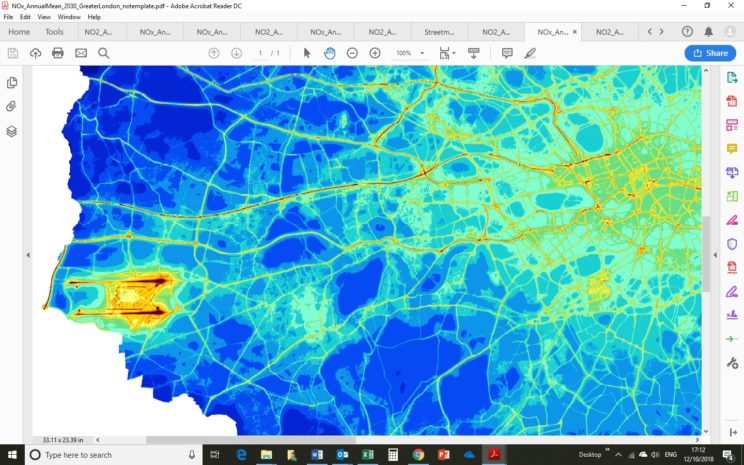
And all that is just from two runways!
Aviation apportionment readings stretch back to Clapham Junction and beyond
So Mr Grayling: why are you telling us and the Transport Committee that 98% of emissions from an expanded Heathrow would be captured within 2 kilometres of the airport boundary?
.
.
The misleading Grayling letter
.
.
See also earlier:
Grayling emissions omission admission: Heathrow air quality costs 2-4 times higher than previously thought
The Commons Transport Committee is currently assessing the Heathrow proposals for a 3rd runway. One of the issues in which they have taken a particular interest is whether the right numbers have been used for the cost to human health of air pollution, and if the costs of pollution beyond a 2km band around the airport have been properly considered. Chris Grayling, Transport Secretary, has now written to the Committee to clarify the government position, and has confirmed that the DfT omitted (in error) to consider the emissions beyond 2km. By contrast the DfT’s own impact appraisal had noted impacts well beyond this 2km boundary, in terms of additional vehicle traffic. The total figure for the extra cost to health, from Grayling’s admission, is now thought to be 2 to 4 times higher than the one published in the official appraisal document. That means the “net present value” of the scheme, previously assessed as minus £-2.2 to plus £3.3 billion over 60 years (so already potentially negative) could drop to as low as minus £-2.6 to plus £2.9 billion under the new estimate. The cost of the damage to human health from additional air pollution, associated with a new runway, is one of the two ways the DfT assesses the cost-benefit analysis of the proposal.
.
.
